Evaluation of an Erbium-Doped Fiber Ring Laser as an Edge Filtering Device for Fiber Bragg Grating Sensor Interrogation
Abstract
1. Introduction
2. Principle of Operation
3. Experimental Setup
4. Characterization as a Strain Sensor Interrogator
5. Conclusions
6. Patents
Author Contributions
Funding
Institutional Review Board Statement
Informed Consent Statement
Data Availability Statement
Conflicts of Interest
Appendix A
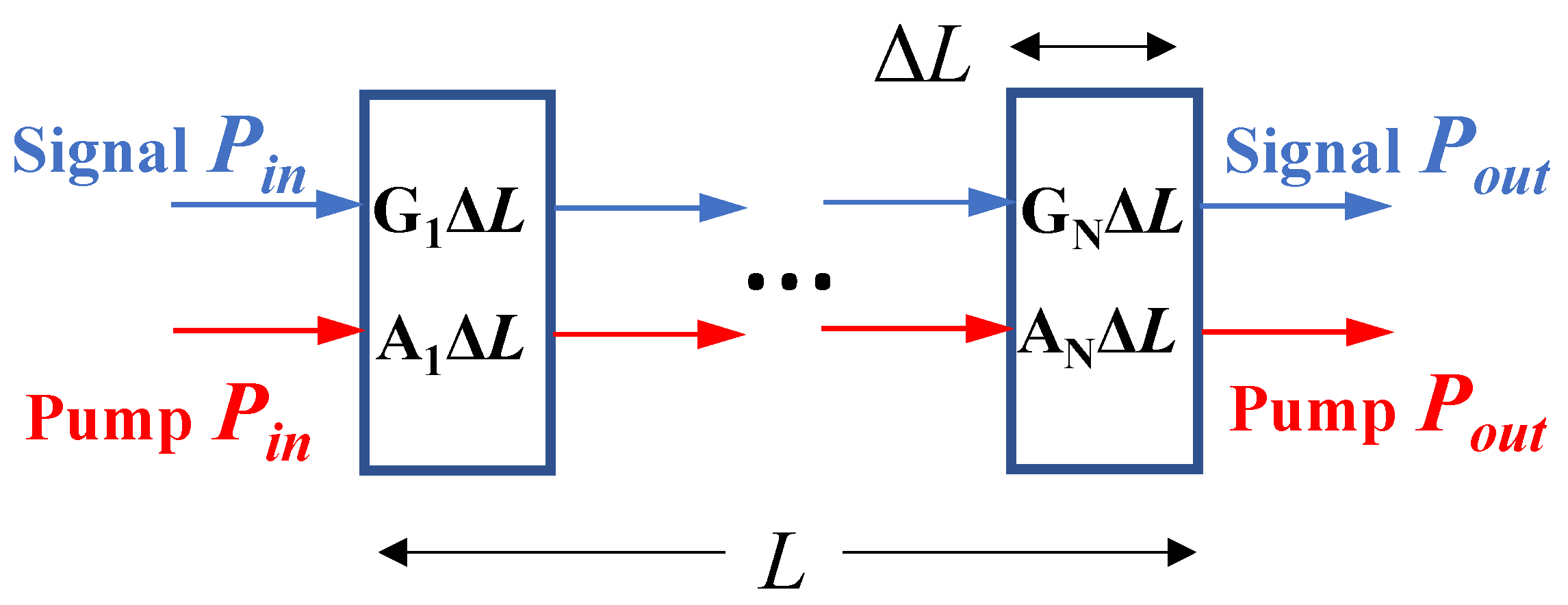
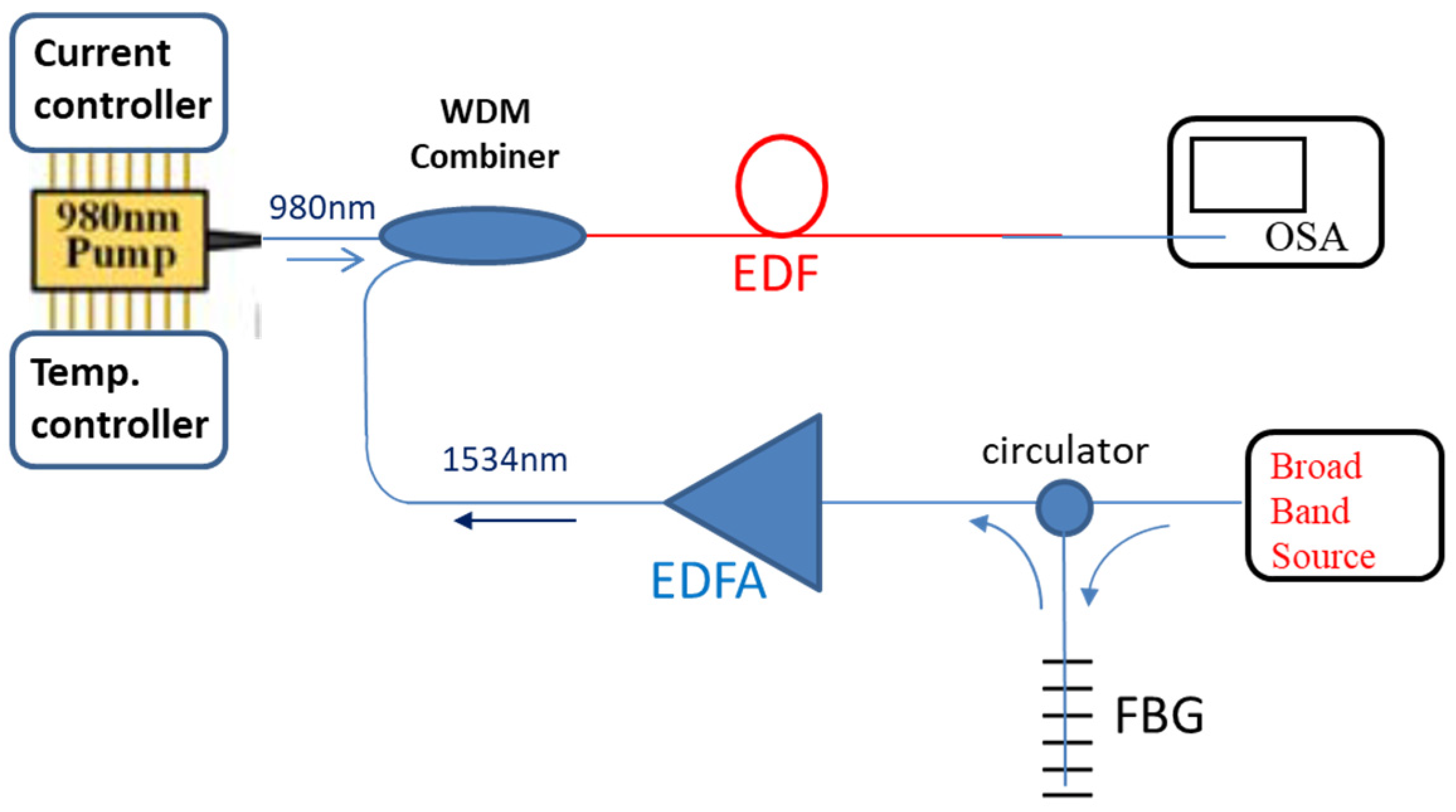
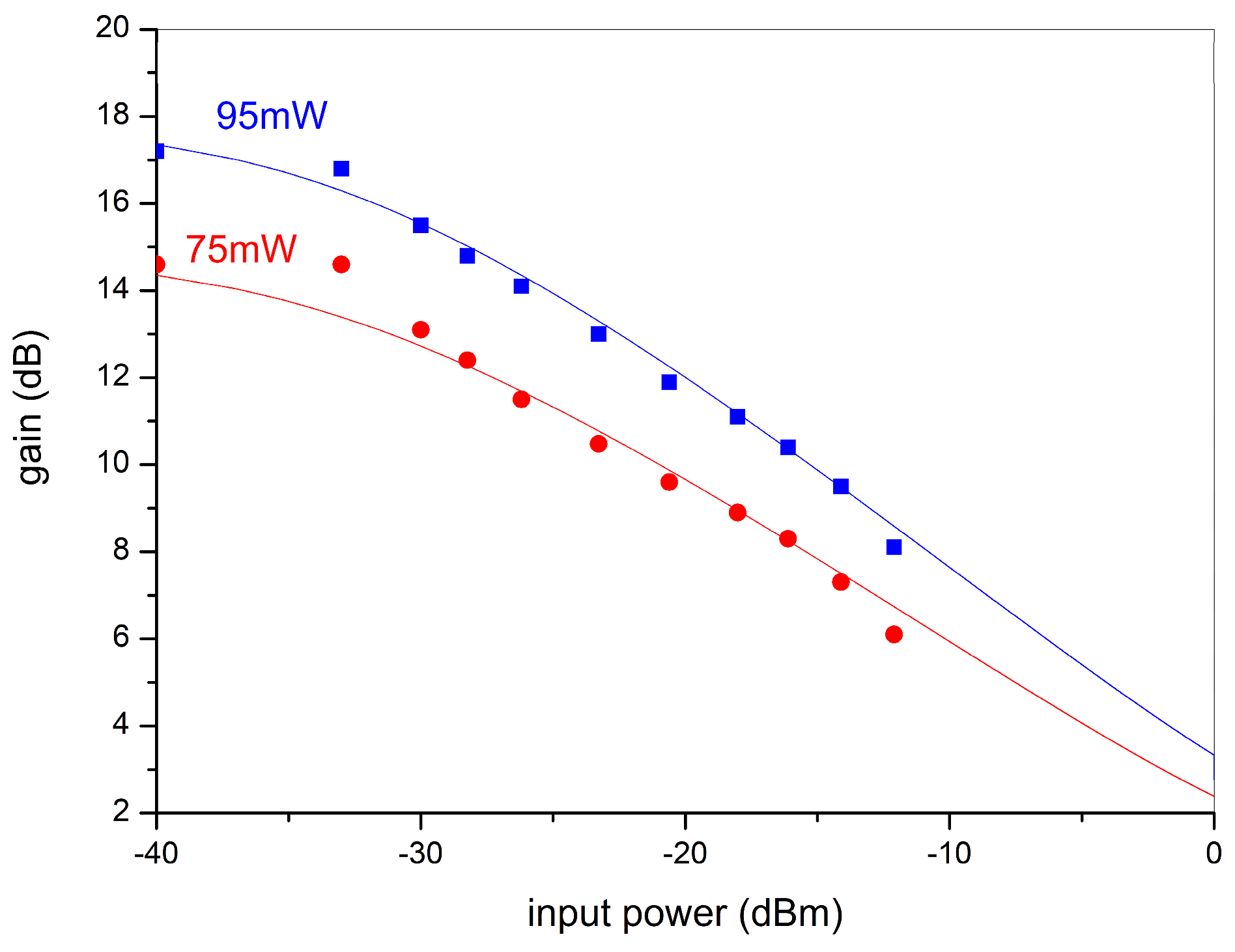
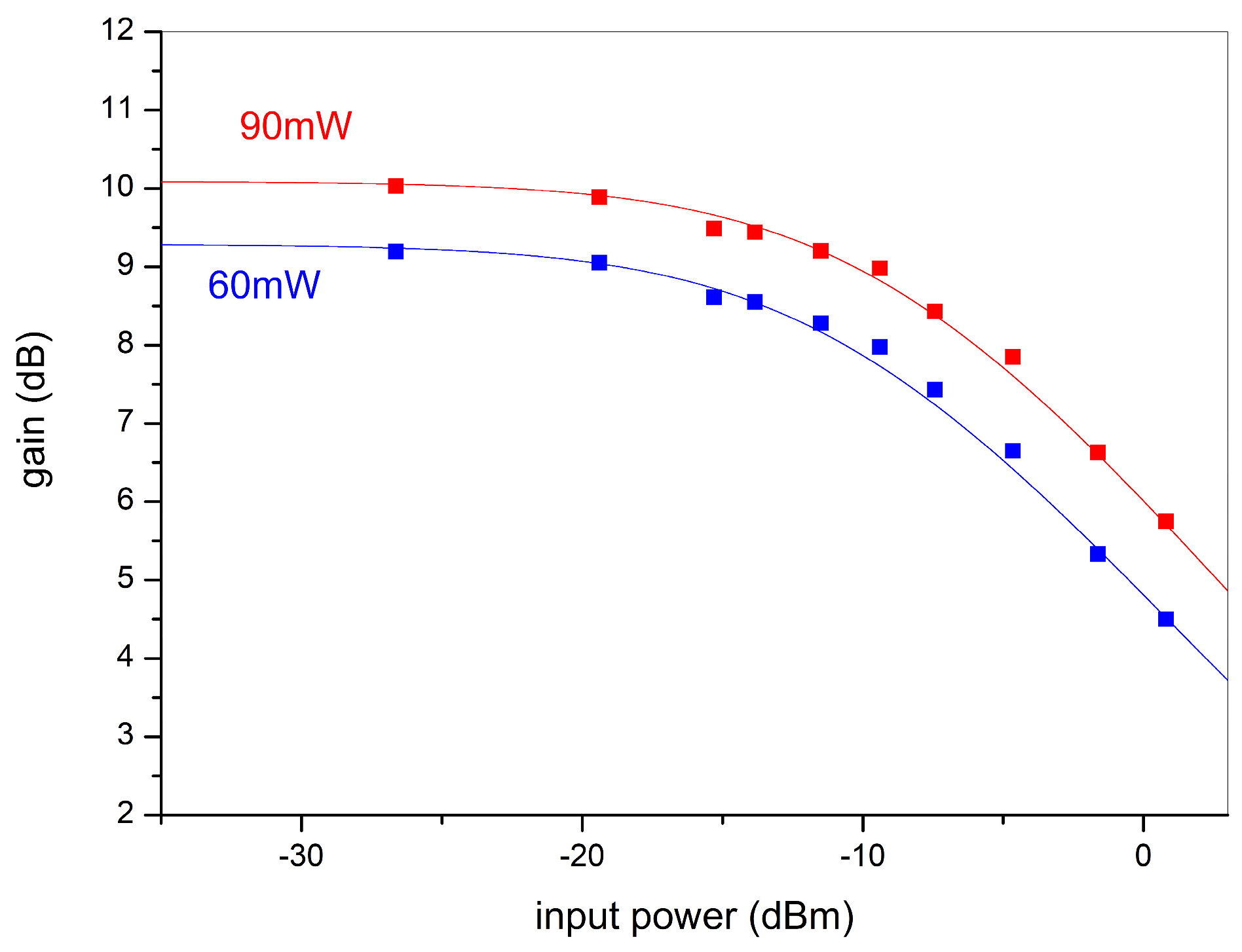
References
- Lopez-Higuera, J.M.; Rodriguez Cobo, L.; Quintela Incera, A.; Cobo, A. Fiber Optic Sensors in Structural Health Monitoring. J. Light. Technol. 2011, 29, 587–608. [Google Scholar] [CrossRef]
- Tosi, D. Review and Analysis of Peak Tracking Techniques for Fiber Bragg Grating Sensors. Sensors 2017, 17, 2368. [Google Scholar] [CrossRef]
- Grattan, K.T.V.; Sun, T. Fiber Optic Sensor Technology: An Overview. Sens. Actuators A Phys. 2000, 82, 40–61. [Google Scholar] [CrossRef]
- Othonos, A.; Kalli, K. Fiber Bragg Gratings: Fundamentals and Applications in Telecommunications and Sensing. Phys. Today 2000, 53, 61–62. [Google Scholar] [CrossRef]
- Kashyap, R. Fiber Bragg Gratings, 2nd ed.; Academic Press: Burlington, MA, USA, 2010; ISBN 9780123725790. [Google Scholar]
- Díaz, C.; Leitão, C.; Marques, C.; Domingues, M.; Alberto, N.; Pontes, M.; Frizera, A.; Ribeiro, M.; André, P.; Antunes, P. Low-Cost Interrogation Technique for Dynamic Measurements with FBG-Based Devices. Sensors 2017, 17, 2414. [Google Scholar] [CrossRef] [PubMed]
- Lei, M.; Zou, W.; Li, X.; Chen, J. Ultrafast FBG Interrogator Based on Time-Stretch Method. IEEE Photon. Technol. Lett. 2016, 28, 778–781. [Google Scholar] [CrossRef]
- Shao, L.; Song, J.; Zhang, A.; He, S. Novel FBG Triangular Filter for Interrogating a FBG Sensor in Dynamic Strain Measurement. Optoelectron. Lett. 2006, 2, 336–338. [Google Scholar] [CrossRef]
- Kumar, S.; Ghorai, S.K.; Sengupta, S. Fiber Bragg Grating Sensor Interrogation Using Edge-Filtering with Long Period Grating Modulated Light Source. Opt. Quantum Electron. 2023, 55, 847. [Google Scholar] [CrossRef]
- Kieu, K.Q.; Mansuripur, M. Biconical Fiber Taper Sensors. IEEE Photon. Technol. Lett. 2006, 18, 2239–2241. [Google Scholar] [CrossRef]
- Bandyopadhyay, S.; Biswas, P.; Pal, A.; Bhadra, S.K.; Dasgupta, K. Empirical Relations for Design of Linear Edge Filters Using Apodized Linearly Chirped Fiber Bragg Grating. J. Light. Technol. 2008, 26, 3853–3859. [Google Scholar] [CrossRef]
- Romero, R.; Frazão, O.; Marques, P.V.S.; Salgado, H.M.; Santos, J.L. Fibre Bragg Grating Interrogation Technique Based on a Chirped Grating Written in an Erbium-Doped Fibre. Meas. Sci. Technol. 2003, 14, 1993–1997. [Google Scholar] [CrossRef][Green Version]
- Fallon, R.W.; Zhang, L.; Everall, L.A.; Williams, J.A.R.; Bennion, I. All-Fibre Optical Sensing System: Bragg Grating Sensor Interrogated by a Long-Period Grating. Meas. Sci. Technol. 1998, 9, 1969–1973. [Google Scholar] [CrossRef]
- Yucel, M.; Koyuncu, O. Design and Implementation of a Passive Edge Filter with High Bandwidth and Slope. Microw. Opt. Technol. Lett. 2019, 61, 2572–2578. [Google Scholar] [CrossRef]
- Tiwari, U.; Thyagarajan, K.; Shenoy, M.R.; Jain, S.C. EDF-Based Edge-Filter Interrogation Scheme for FBG Sensors. IEEE Sens. J. 2013, 13, 1315–1319. [Google Scholar] [CrossRef]
- Marrazzo, V.R.; Fienga, F.; Sito, L.; Beni, N.; Szillasi, Z.; Riccio, M.; Buontempo, S.; Irace, A.; Breglio, G. Experimental Tests of a Full Analog Fiber Optic Monitoring System Suitable for Safety Application at CERN. IEEE Trans. Instrum. Meas. 2023, 72, 7002408. [Google Scholar] [CrossRef]
- Marrazzo, V.R.; Fienga, F.; Borghese, A.; Remondini, E.; Schettini, C.; Cafarelli, L.; Laudati, A.; Cusano, A.; Irace, A.; Breglio, G. IoT Node Interrogation System for Fiber Bragg Grating Sensors: Design, Characterization, and On-Field Test. IEEE Trans. Instrum. Meas. 2024, 73, 2002008. [Google Scholar] [CrossRef]
- Yu, F.T.S.; Yin, S. (Eds.) Fiber Optic Sensors; Optical Engineering; Marcel Dekker: New York, NY, USA, 2002; ISBN 9780824707323. [Google Scholar]
- Tanaka, S.; Ogawa, T.; Yokosuka, H.; Takahashi, N. Multiplexed Fiber Bragg Grating Vibration Sensor with Temperature Compensation Using Wavelength-Switchable Fiber Laser. Jpn. J. Appl. Phys. 2004, 43, 2969. [Google Scholar] [CrossRef]
- Sunanda, S.; Sharma, E.K. Field Variational Analysis for Modal Gain in Erbium-Doped Fiber Amplifiers. J. Opt. Soc. Am. B 1999, 16, 1344–1347. [Google Scholar] [CrossRef]
- Stathopoulos, N.A.; Savaidis, S.P. Gain Calculation and Propagation Characteristics in Erbium-Doped Devices with Nonlinear Host Materials. Opt. Commun. 2008, 281, 80–89. [Google Scholar] [CrossRef]
- Myslinski, P.; Nguyen, D.; Chrostowski, J. Effects of Concentration on the Performance of Erbium-Doped Fiber Amplifiers. J. Light. Technol. 1997, 15, 112–120. [Google Scholar] [CrossRef]
- Giles, C.R.; Desurvire, E. Modeling Erbium-Doped Fiber Amplifiers. J. Light. Technol. 1991, 9, 271–283. [Google Scholar] [CrossRef]
- Desurvire, E. Erbium-Doped Fiber Amplifiers: Principles and Applications. Phys. Today 1995, 48, 56–58. [Google Scholar] [CrossRef]
- Teyo, T.C.; Leong, M.K.; Ahmad, H. Noise Characteristics of Erbium-Doped Fiber Amplifier with Optical Counter-Feedback. Jpn. J. Appl. Phys. 2002, 41, 2949–2950. [Google Scholar] [CrossRef]
- Bellemare, A.; Karbsek, M.; Riviere, C.; Babin, F.; He, G.; Roy, V.; Schinn, G.W. A Broadly Tunable Erbium-Doped Fiber Ring Laser: Experimentation and Modeling. IEEE J. Sel. Top. Quantum Electron. 2001, 7, 22–29. [Google Scholar] [CrossRef]
- Durak, F.E.; Altuncu, A. The Effect of ASE Reinjection Configuration through FBGs on the Gain and Noise Figure Performance of L-Band EDFA. Opt. Commun. 2017, 386, 31–36. [Google Scholar] [CrossRef]
- Stathopoulos, N.A.; Simos, I. Modelling of Non-Uniform and Fs-Laser Inscribed Fibre Bragg Gratings. Opt. Fiber Technol. 2022, 70, 102878. [Google Scholar] [CrossRef]
- Zhu, L.; Chen, Q.; Zhao, R.; Lou, X.; He, W. A Switchable Dual-Wavelength Erbium-Doped Fiber Laser Based on Saturable Absorber and Active Optical Fiber Ring Filter. Optoelectron. Lett. 2014, 10, 434–438. [Google Scholar] [CrossRef]
- He, W.; Zhu, L.; Dong, M.; Luo, F.; Chen, X. Stable and Tunable Narrow-Linewidth Erbium-Doped Fibre Laser Based on Polarization-Maintaining Fibre Ring Filter and PM-FBG. Laser Phys. 2014, 24, 125102. [Google Scholar] [CrossRef]
- Darwich, D.; Youssef, A.; Pisco, M.; Zaraket, H. Investigation of Low-Cost Interrogation Technique Based on Modulated Distributed Feedback Laser. IEEE Sens. J. 2020, 20, 2460–2466. [Google Scholar] [CrossRef]
- Saleh, A.A.M.; Jopson, R.M.; Evankow, J.D.; Aspell, J. Modeling of Gain in Erbium-Doped Fiber Amplifiers. IEEE Photon. Technol. Lett. 1990, 2, 714–717. [Google Scholar] [CrossRef]
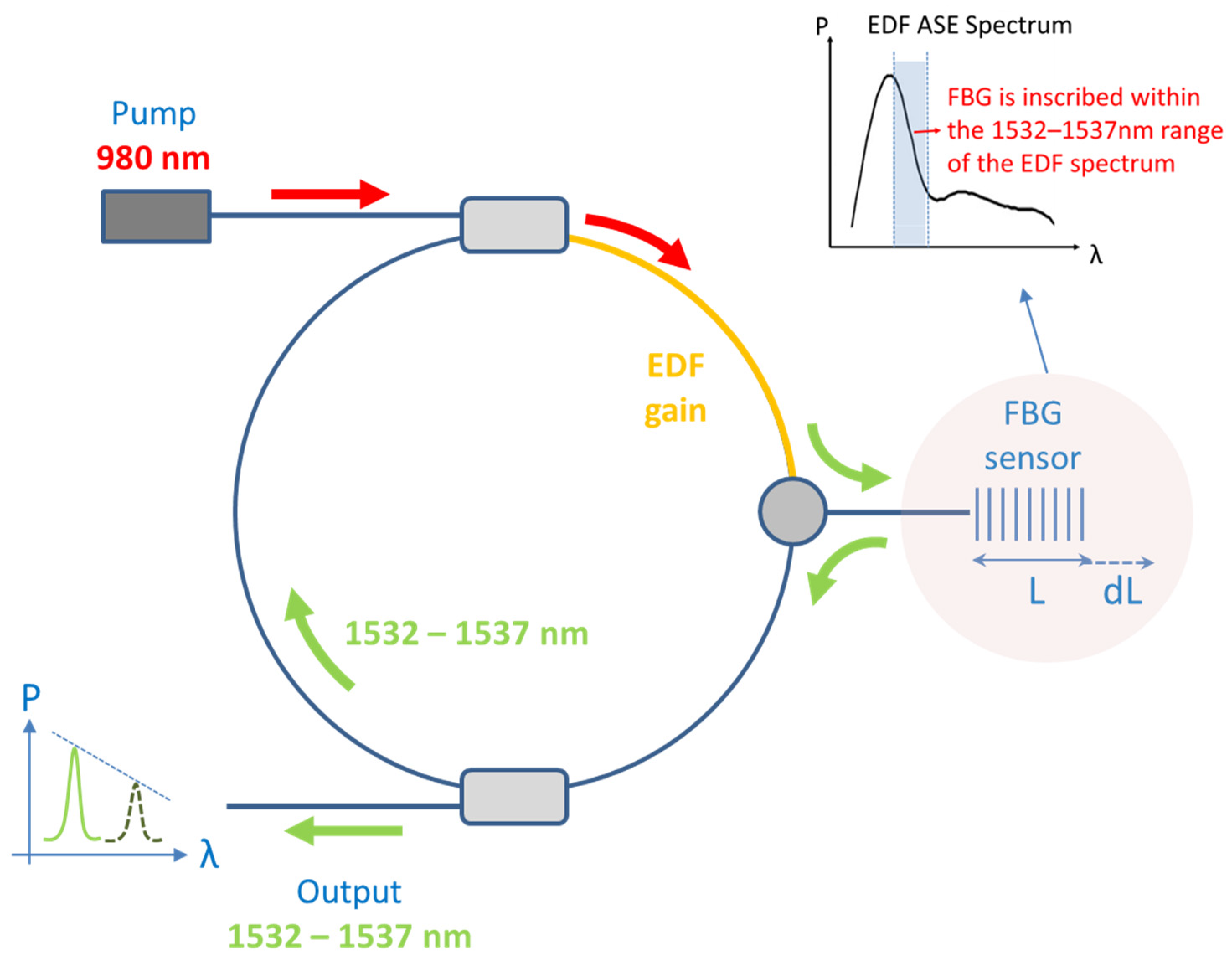
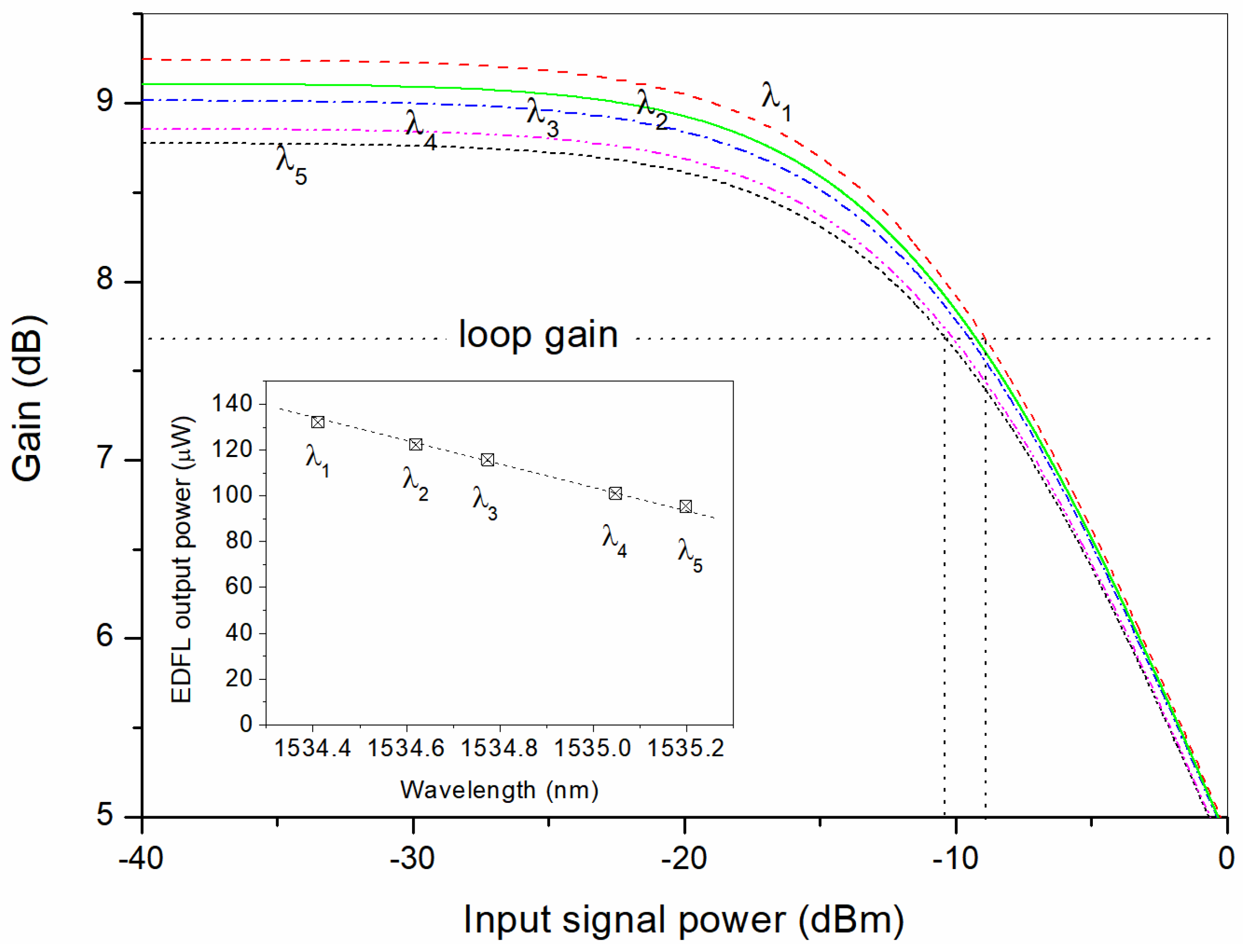
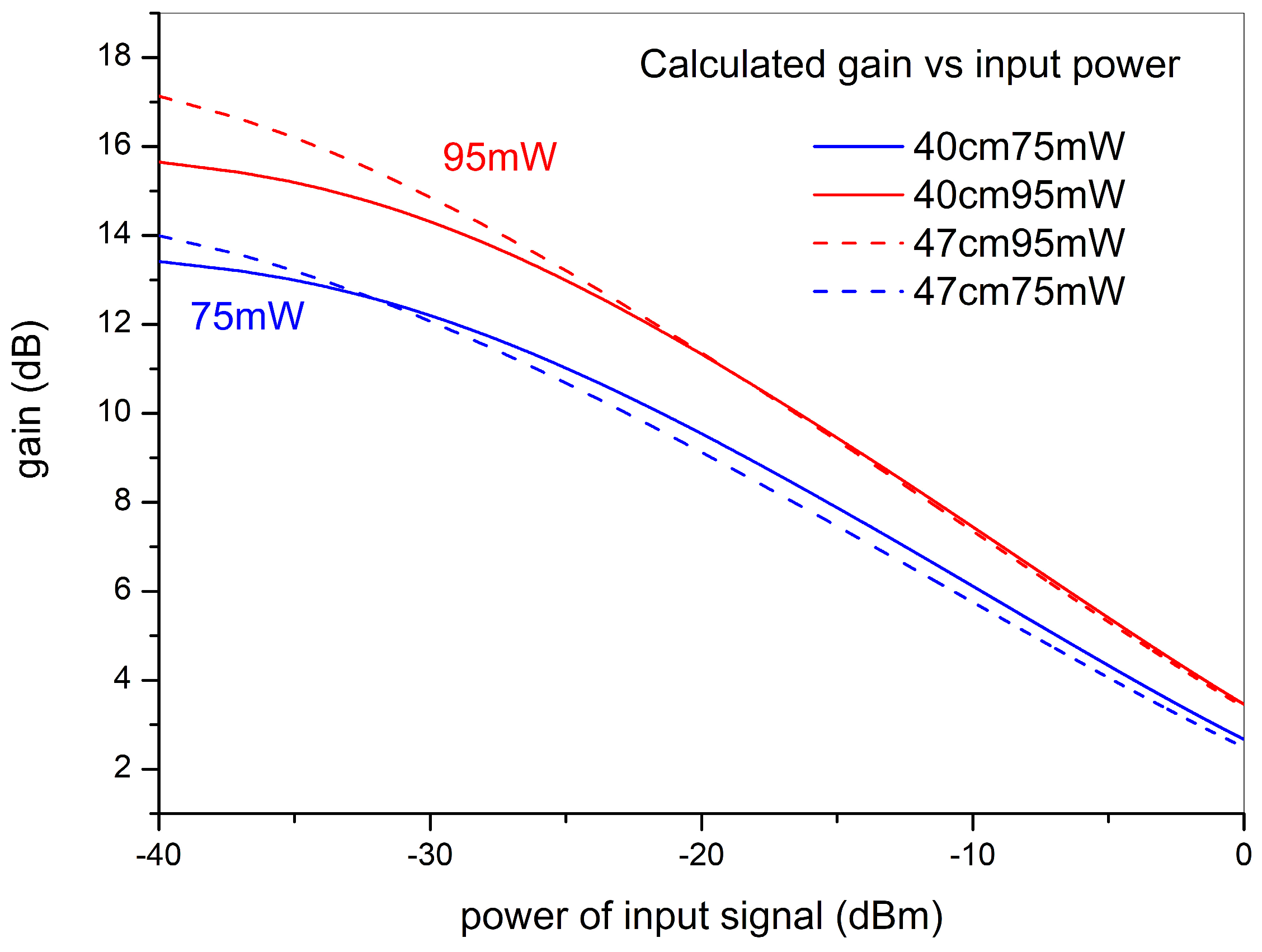

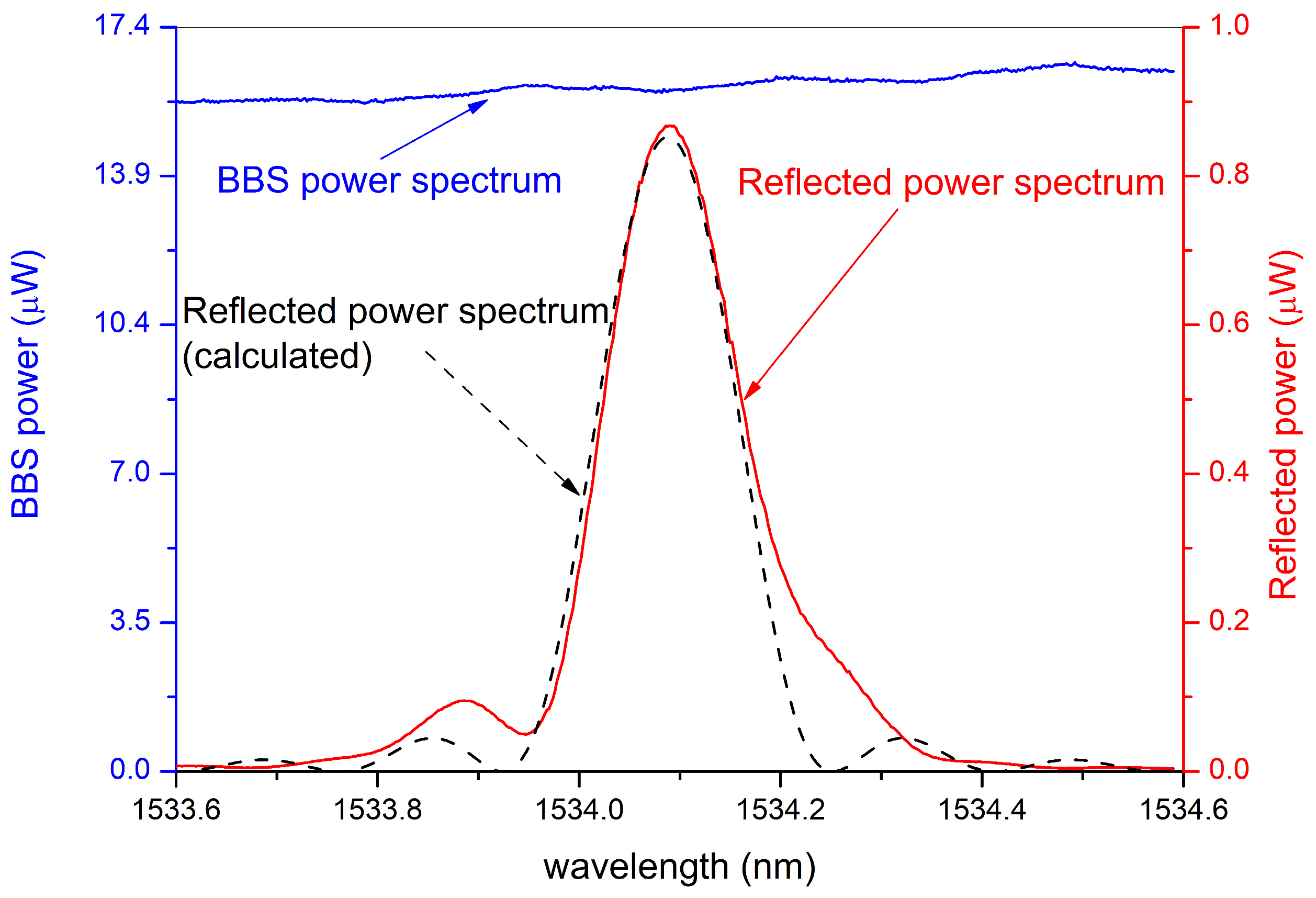

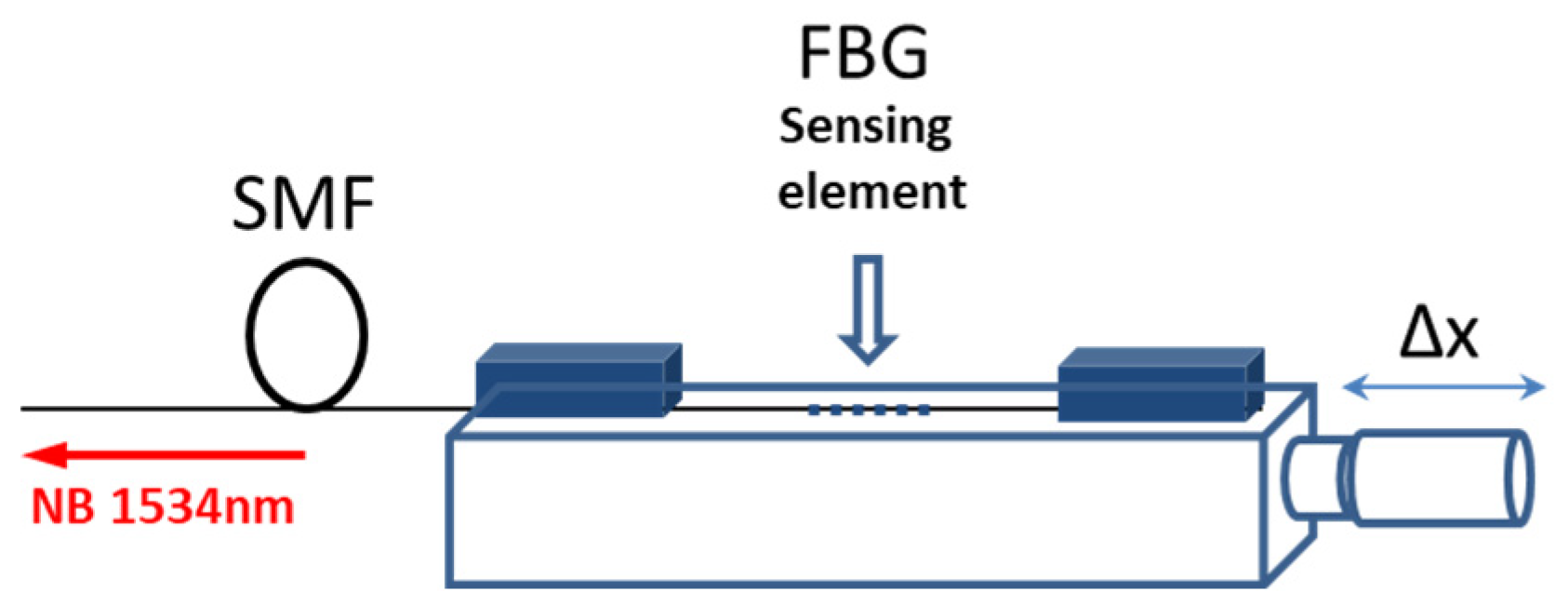
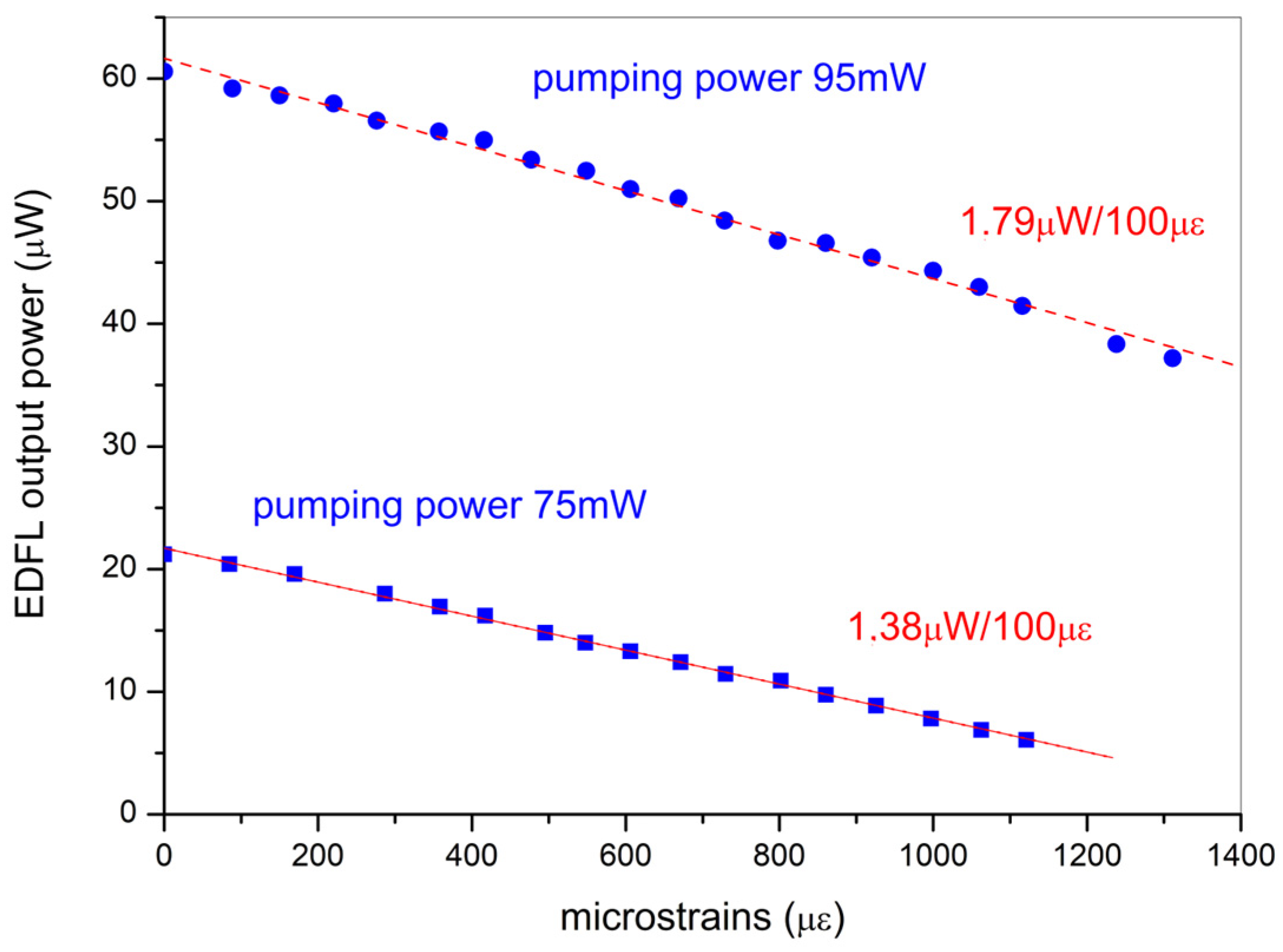
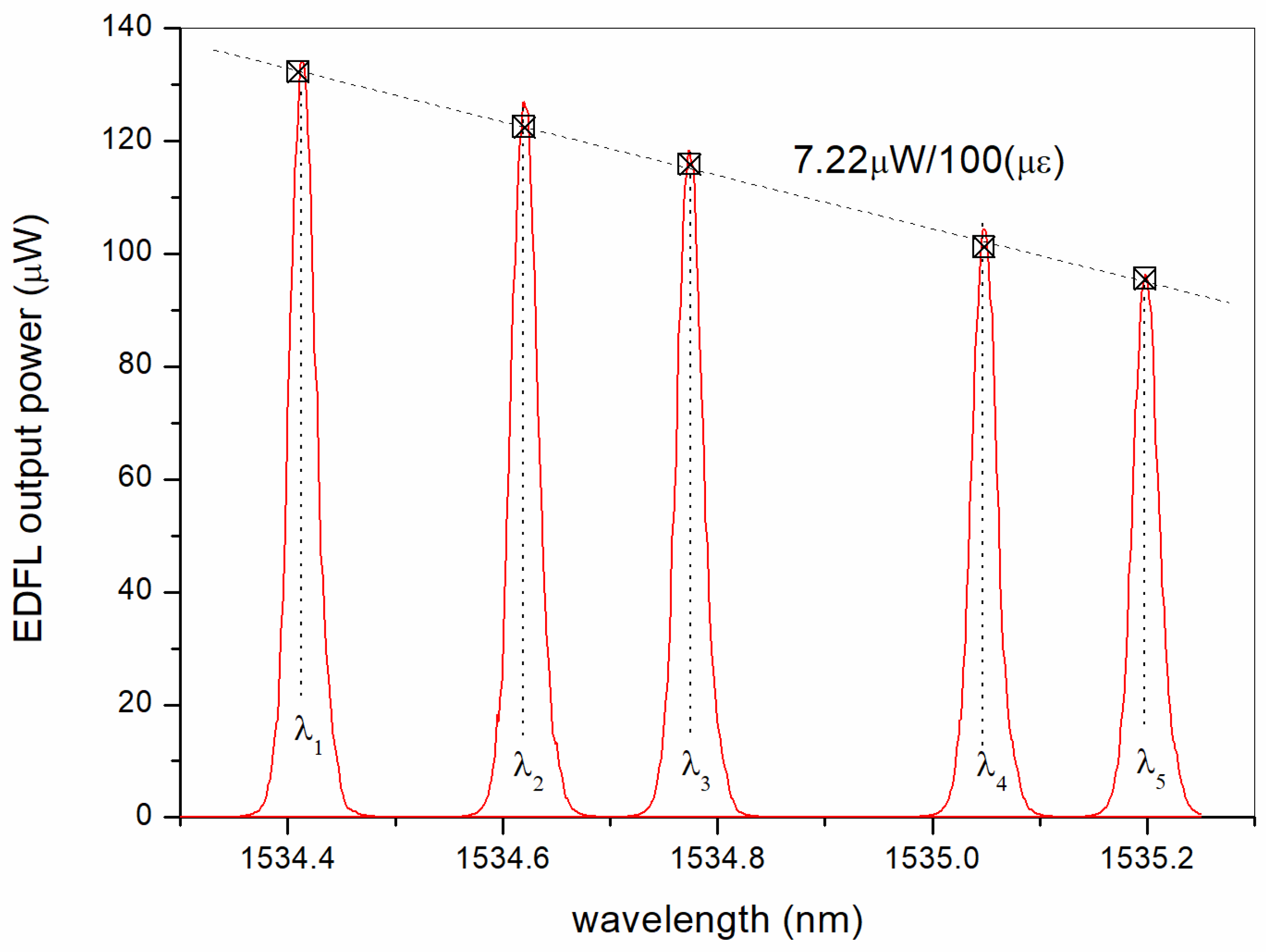
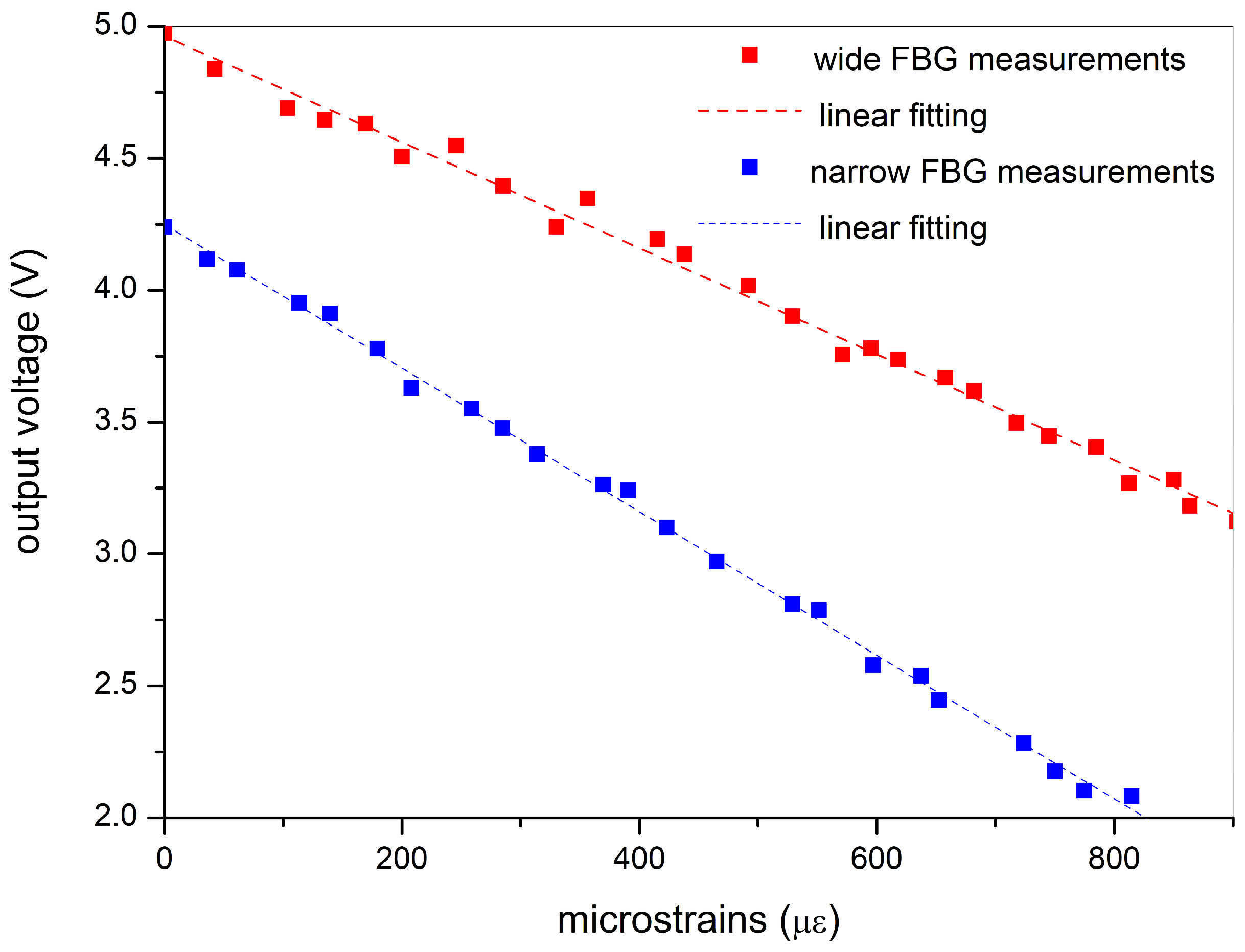
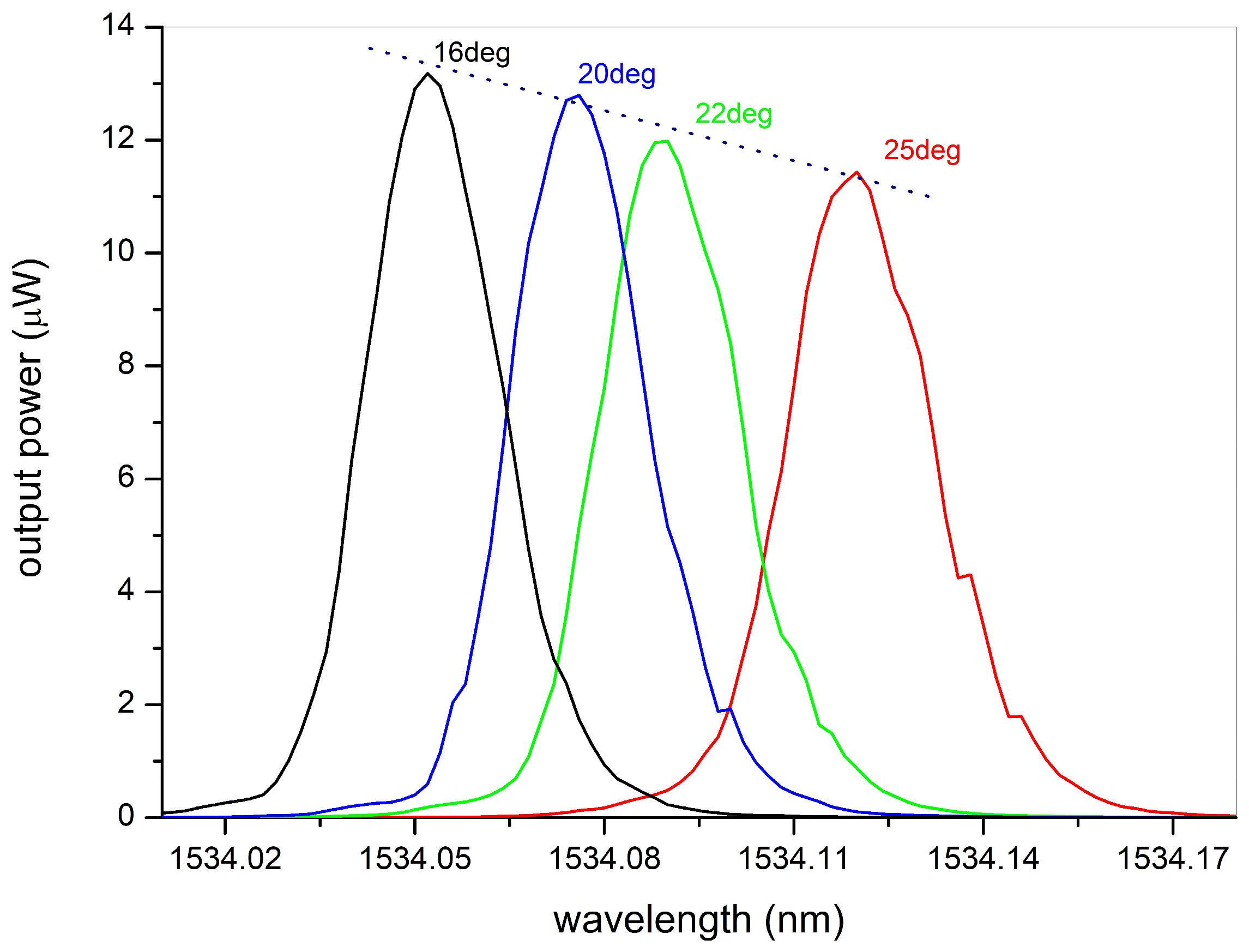
Disclaimer/Publisher’s Note: The statements, opinions and data contained in all publications are solely those of the individual author(s) and contributor(s) and not of MDPI and/or the editor(s). MDPI and/or the editor(s) disclaim responsibility for any injury to people or property resulting from any ideas, methods, instructions or products referred to in the content. |
© 2024 by the authors. Licensee MDPI, Basel, Switzerland. This article is an open access article distributed under the terms and conditions of the Creative Commons Attribution (CC BY) license (https://creativecommons.org/licenses/by/4.0/).
Share and Cite
Stathopoulos, N.A.; Lazakis, C.; Simos, I.; Simos, C. Evaluation of an Erbium-Doped Fiber Ring Laser as an Edge Filtering Device for Fiber Bragg Grating Sensor Interrogation. Photonics 2024, 11, 407. https://doi.org/10.3390/photonics11050407
Stathopoulos NA, Lazakis C, Simos I, Simos C. Evaluation of an Erbium-Doped Fiber Ring Laser as an Edge Filtering Device for Fiber Bragg Grating Sensor Interrogation. Photonics. 2024; 11(5):407. https://doi.org/10.3390/photonics11050407
Chicago/Turabian StyleStathopoulos, Nikolaos A., Christos Lazakis, Iraklis Simos, and Christos Simos. 2024. "Evaluation of an Erbium-Doped Fiber Ring Laser as an Edge Filtering Device for Fiber Bragg Grating Sensor Interrogation" Photonics 11, no. 5: 407. https://doi.org/10.3390/photonics11050407
APA StyleStathopoulos, N. A., Lazakis, C., Simos, I., & Simos, C. (2024). Evaluation of an Erbium-Doped Fiber Ring Laser as an Edge Filtering Device for Fiber Bragg Grating Sensor Interrogation. Photonics, 11(5), 407. https://doi.org/10.3390/photonics11050407




